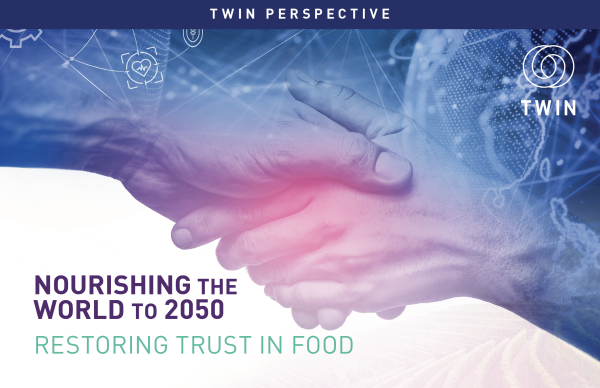A report inspired by the Cleantech Innovation Summit 2014
Executive Summary
- The high long-term demand for energy is expected to increase demand across all forms of energy. While renewables are the fastest growing segment, traditional energy forms are expected to continue to dominate in the next couple of decades. The opportunity for cleantech is to address the entire energy mix.
- The growth in energy demand is expected to create a number of significant challenges—from higher greenhouse gas emissions to inadequacy of grid infrastructure and impact on resources such as water. These areas represent opportunities for cleantech companies to drive innovation.
- The investment and funding landscape is changing; while venture funding is still down from a year ago, late stage deals are increasing, as is the average deal size. Corporates are playing an increasing role, especially in the scale up and manufacturing phases of technology evolution. Partnerships between large corporates and emerging cleantech startups work well when the corporate partner is committed to the success of the technology.
The Outlook: Clean Technology across the Energy Mix
Led by emerging economies, the global energy demand is expected to increase by nearly a third over the next two decades. The International Energy Agency (IEA) estimates that renewable sources of energy, including hydropower and bioenergy, are expected to grow as part of the overall energy mix, from 13% in 2011 to 18% by 2035. The decline of traditional biomass as a fuel reflects in a lower overall growth number, and modern renewables grow at higher rates. This is seen in power generation, where renewables make up almost half the increase in total generation. The IEA estimates renewables to become the second largest source of electricity before 2015 and approach coal as the primary source by 2035.
Despite high growth rates of renewable sources (estimated at 77% from 2011 to 2015 by the IEA), it appears that the overall demand for energy will result in demand for all forms of energy. Oil, coal, natural gas and nuclear are also expected to grow, although their share in the energy mix falls slightly. In fact, coal is expected to grow by 17%, higher than oil at 13%, driven by consumption in China, India and Indonesia. Coal is expected to remain the leading fuel for power generation globally, even as its share drops from 41% in 2011 to 33% by 2035. The development of unconventional oil and gas resources and expected growth of natural gas demand by 48% over the same time frame will likely mean that fossil fuels remain a dominant part of the energy mix.
Implications for Cleantech: There is a tremendous opportunity for clean energy technologies to address the entire energy mix. Growth in energy demand creates challenges that providers of clean energy technologies can turn into opportunities. These include, but are not limited to:
- Greenhouse gases: The IEA estimates energy related CO2 emissions to rise 20% by 2035. Greenhouse gases such as CO2 and methane are a significant source of concern due to their link to global warming and continue to remain the focus of global efforts and government regulations.
- Inadequacy of energy infrastructure and the grid: Increasing energy demand is expected to place a significant burden on energy infrastructure, which is already inadequate in many parts of the world.
- Water scarcity: Water is an increasingly scarce resource, with a very close link to energy. The exploration and production of energy often requires water and a significant amount of energy is consumed in the collection, treatment and distribution of water.
- Energy demand: The cheapest watt of energy is the one that is not used. There is an increasing opportunity to help companies, municipalities and individuals reduce their energy usage and cut cost.
Clean energy technologies have the opportunity to address all of these challenges. Energy efficiency is a long-term opportunity to reduce dependence on energy, lower emissions and provide economic benefit. Distributed generation through renewables and storage technologies can help address growing energy demand and grid reliability issues. Reuse and recycling of waste through waste-to-energy and carbon (CO2) processing technologies can create value from waste or harmful substances. Improvements in water technology can help preserve a precious resource.
Illustrative Examples of Clean Technologies Across the Entire Energy Mix
There are a number of clean technology companies that address various aspects of the overall energy mix; a few are highlighted below as illustrative examples.

GlassPoint designs, manufactures and installs solar steam generators for oil and gas. GlassPoint’s solar steam generators are used for Enhanced Oil Recovery (EOR) and claim to significantly reduce both gas consumption and CO2 emissions by up to 80%.

LanzaTech has developed a biological approach to transform carbon rich waste gases and residues into fuels and chemicals. It is able to capture the carbon from gas and reuse it as a fuel or sequester it into chemical intermediates that can be used in the manufacture of new products such as plastics, nylon and rubber. An example of its application is its joint venture with Baosteel to convert carbon monoxide from Baosteel mills’ waste gas into fuel grade ethanol.

EcoMotors is looking to innovate on the internal combustion engine through its opposed piston, opposed cylinder engine. Their technology reduces the size and weight of the engine and provides for lower car emissions, fuel efficiency and also lowers the cost of manufacturing.
Changing Investment Flows and Partnership Models
The overall investment and funding of clean technology remains challenged, a trend that continues from the past few years. However, there are a number of positive signs emerging:
- The PwC Cleantech MoneyTree Report shows that, in the US, 4Q 2013 saw a slight increase in venture funding from the previous quarter; in fact, 4Q venture funding at $418 million was the highest in 2013.
- The focus of venture funding has shifted from early-stage to late-stage, with fewer deals, but higher deal size.
- Corporate ventures and sovereign funds have increased activity, with firms like GE, Siemens, DSM, Waste Management and Saudi Aramco maintaining or increasing their venture investments in cleantech.
- There is an increased emphasis on partnerships between various players in the energy ecosystem. Companies like LanzaTech and EcoMotors have benefitted tremendously from their partnerships with Baosteel and Zhongding. In both cases, the larger corporate partners have provided significant capital required for commercialization and manufacturing.
Partnerships between large corporates and emerging cleantech startups have worked well when the corporate partner is committed to the success of the technology. For example, Zhonding Power, the Chinese auto parts company, is investing $200 million to build a factory to manufacture EcoMotor’s engines, and in turn, expects to sell the engines domestically in China. Their move is in response to very aggressive goals set by the Chinese government to reduce the country’s air pollution and carbon emissions. LanzaTech’s joint venture with Baosteel is also being financed entirely by Baosteel, as it scales up a 100,000 gallon a year demonstration plant installed at one of Baosteel’s mills near Shanghai.
The Call to Action
Clean technologies have now entered the mainstream energy landscape, with potential to unlock significant opportunities across the energy mix. As you examine the cleantech landscape, explore the following questions:
- What challenges can you turn into opportunities?
- How can you construct a portfolio of opportunities across varying timeframe and risk profiles?
- How can your company create and capture value in the evolving energy and cleantech ecosystem?
- Who are the right partners for you to consider?
References
- Speaker presentations at the Cleantech Innovation Summit, February 12, 2014
- World Energy Outlook 2013, International Energy Agency
- PwC Cleantech MoneyTree Report, Q4 2013
- GigaOm Research
- Company websites
Written by: Satish Rao srao@clareo.com




